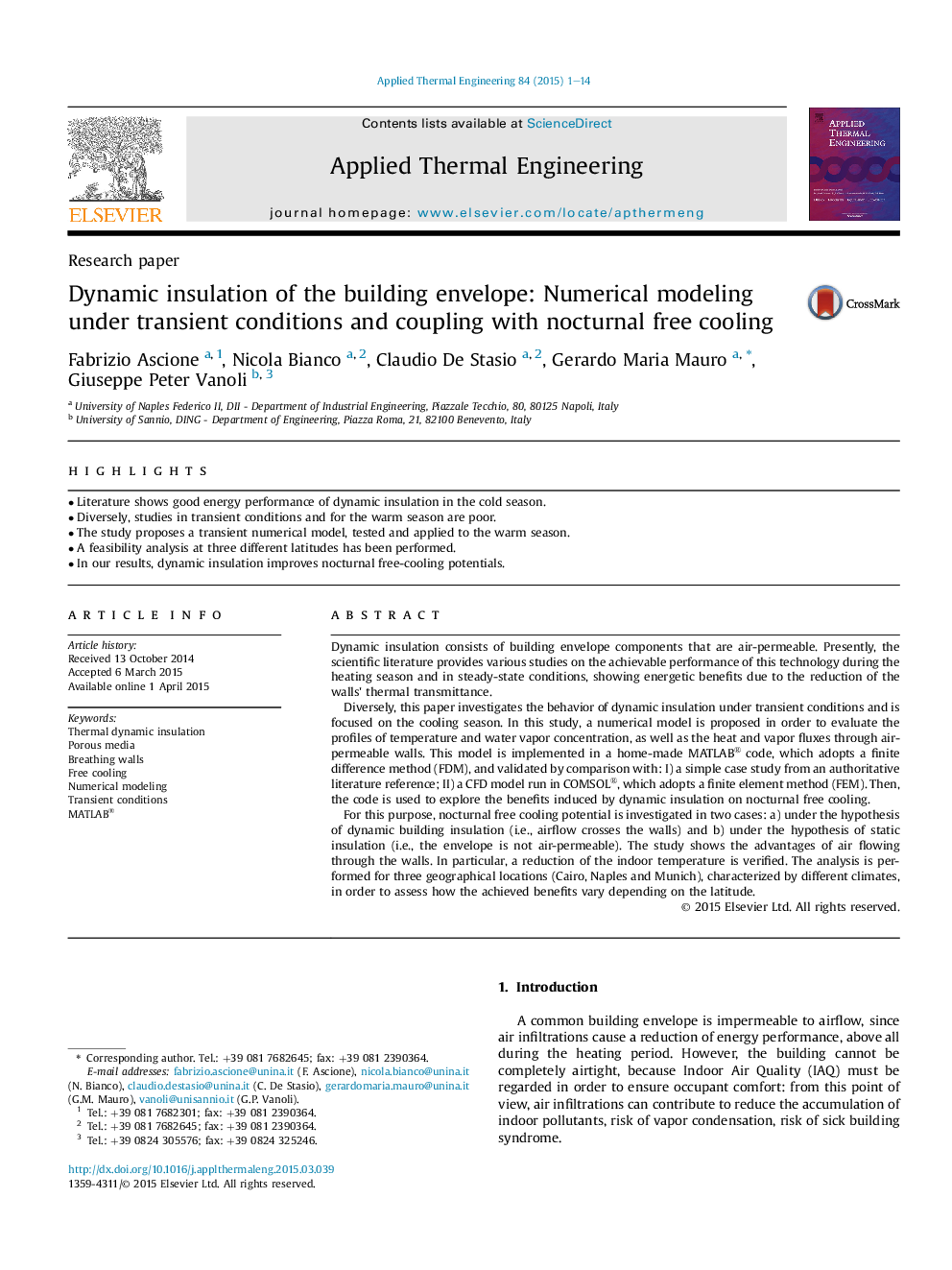| کد مقاله | کد نشریه | سال انتشار | مقاله انگلیسی | نسخه تمام متن |
|---|---|---|---|---|
| 645551 | 1457144 | 2015 | 14 صفحه PDF | دانلود رایگان |
• Literature shows good energy performance of dynamic insulation in the cold season.
• Diversely, studies in transient conditions and for the warm season are poor.
• The study proposes a transient numerical model, tested and applied to the warm season.
• A feasibility analysis at three different latitudes has been performed.
• In our results, dynamic insulation improves nocturnal free-cooling potentials.
Dynamic insulation consists of building envelope components that are air-permeable. Presently, the scientific literature provides various studies on the achievable performance of this technology during the heating season and in steady-state conditions, showing energetic benefits due to the reduction of the walls' thermal transmittance.Diversely, this paper investigates the behavior of dynamic insulation under transient conditions and is focused on the cooling season. In this study, a numerical model is proposed in order to evaluate the profiles of temperature and water vapor concentration, as well as the heat and vapor fluxes through air-permeable walls. This model is implemented in a home-made MATLAB® code, which adopts a finite difference method (FDM), and validated by comparison with: I) a simple case study from an authoritative literature reference; II) a CFD model run in COMSOL®, which adopts a finite element method (FEM). Then, the code is used to explore the benefits induced by dynamic insulation on nocturnal free cooling.For this purpose, nocturnal free cooling potential is investigated in two cases: a) under the hypothesis of dynamic building insulation (i.e., airflow crosses the walls) and b) under the hypothesis of static insulation (i.e., the envelope is not air-permeable). The study shows the advantages of air flowing through the walls. In particular, a reduction of the indoor temperature is verified. The analysis is performed for three geographical locations (Cairo, Naples and Munich), characterized by different climates, in order to assess how the achieved benefits vary depending on the latitude.
Journal: Applied Thermal Engineering - Volume 84, 5 June 2015, Pages 1–14
